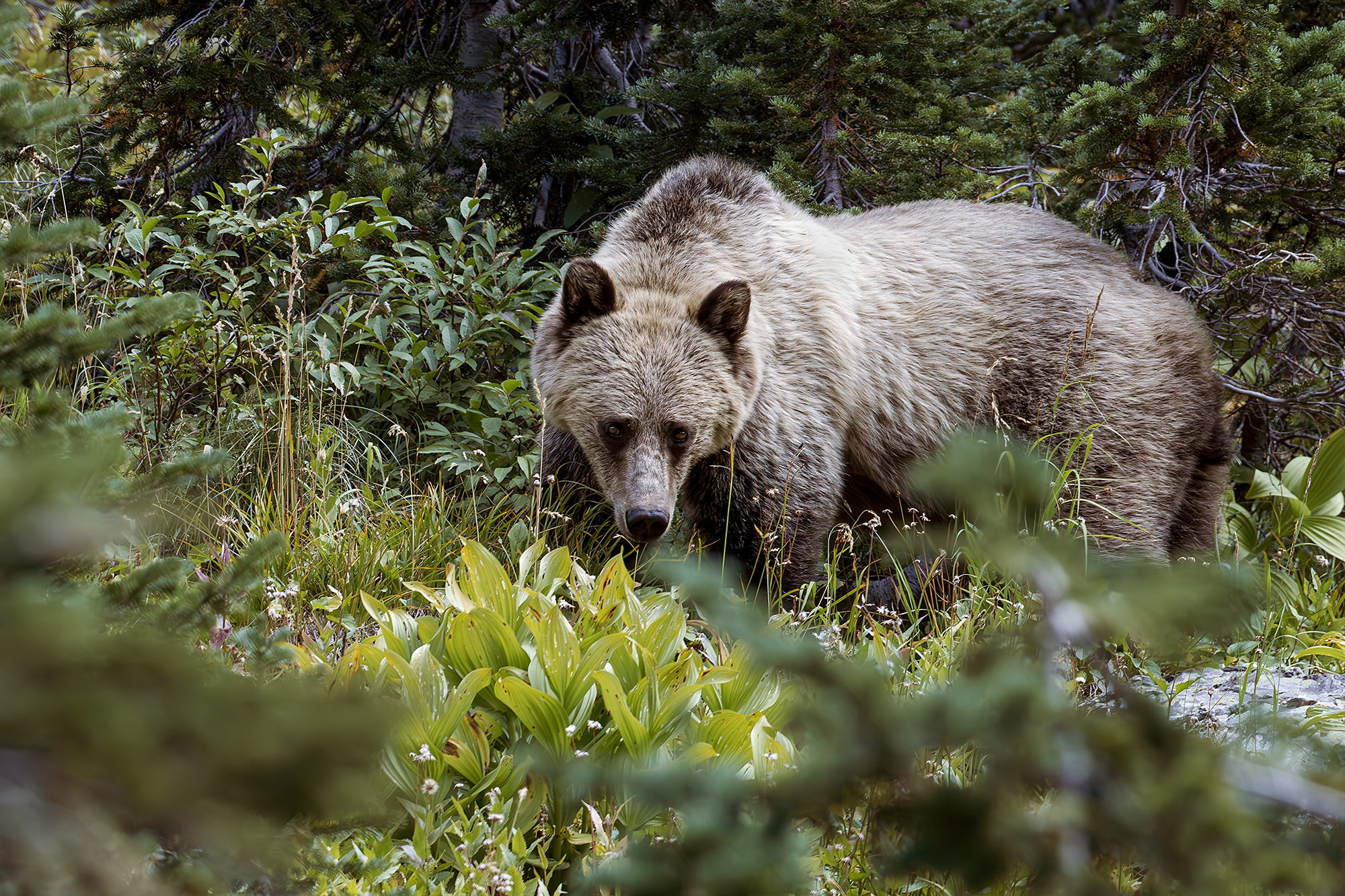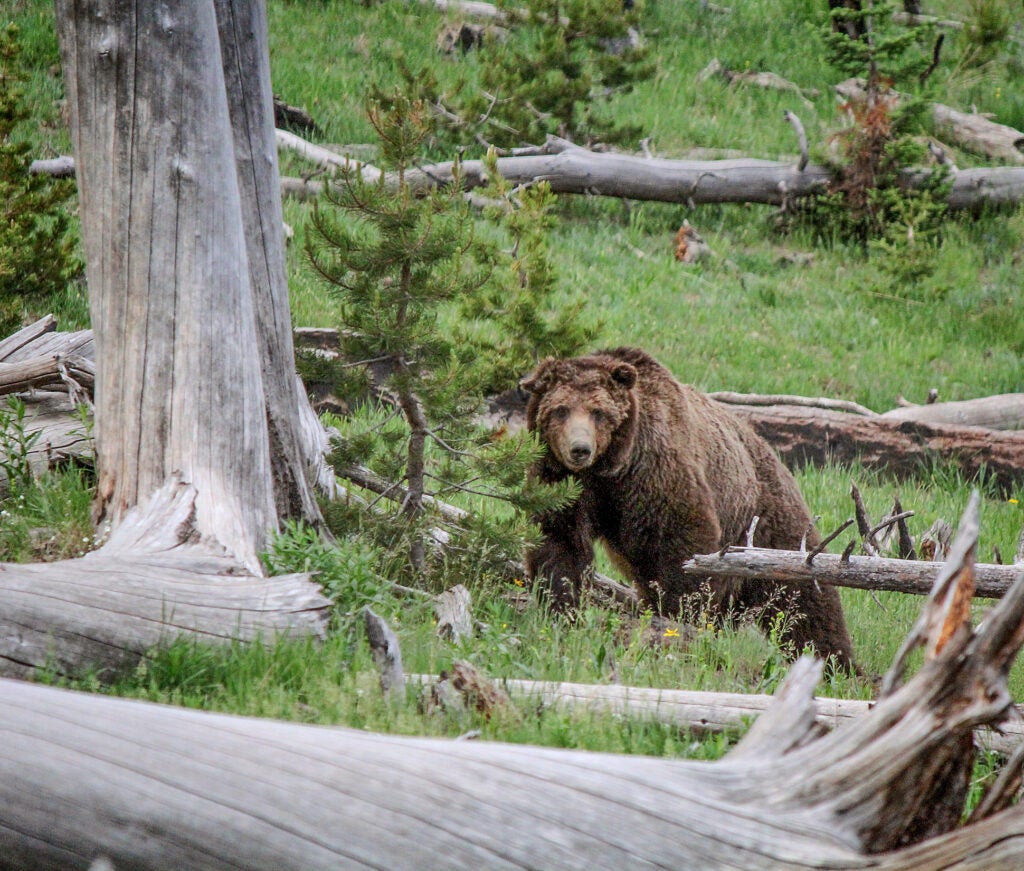Now Is the Time to Raise Your Voice for Grizzly Protections
Grizzlies face growing threats to their survival in the Northern Rockies. Here's how we're helping them come back from the brink.

Fifty years after the federal government added Yellowstone grizzlies to the endangered species list, the bears have returned from the brink of extinction – but their survival is still precarious. In 2024, we saw more grizzlies killed by humans than in any other year in the past half-century.
Despite this, the states of Montana, Wyoming, and Idaho recently urged the government to prematurely remove the bears’ longstanding protections. The Fish and Wildlife Service under the Biden administration took the right step by rejecting the states’ petitions, but at the same time proposed shrinking the grizzlies’ protected range and allowing increased killing of bears. The comment period for this rule closes on May 16.
The grizzly bear stands as an embodiment of wild, untamed nature, yet in the 19th and early 20th century they were almost hunted to oblivion. Their comeback story illustrates the power of the Endangered Species Act (ESA) and habitat conservation to pull a species back from the edge.
Earthjustice attorneys have spent decades fighting to give grizzlies their chance at recovery. Here’s what to know about this keystone species and how we’re working to continue their restoration.
Does the Endangered Species Act protect grizzly bears?
Outside of Alaska, the grizzly bear is currently listed as “threatened” under the Endangered Species Act. In January, the U.S. Fish and Wildlife Service decided to continue this listing for grizzly bears in the lower 48 states (most grizzly populations are in Wyoming, Idaho, and Montana, and rarely in Washington). Grizzlies still face significant threats to their survival due to loss of key food sources from climate change, killing by humans, hostile state management practices, and habitat fragmentation from human development.
Earthjustice successfully fought off efforts by the first Trump administration to delist the Greater Yellowstone population, part of a broader campaign to protect grizzlies from human-caused killing and habitat destruction.
The most recent attempt to delist the bears came from Wyoming, Idaho, and Montana, who petitioned the government to remove grizzlies from the endangered species list. In rejecting those petitions, the U.S. Fish and Wildlife Service noted that the best available science shows that threatened grizzly bears are not yet fully recovered. Delisting grizzlies under the current state management policies would spell disaster for these bears. For example, removing federal protections could allow increased lethal management of grizzly bears that come into conflict with livestock, and likely allow for trophy hunts.

A grizzly on Dunraven Pass in Yellowstone National Park. (Eric Johnston / NPS)
What do grizzlies need to fully recover?
Earthjustice has worked with leading bear biologists to propose an updated recovery plan for the species. The overarching vision is for currently isolated populations, such as the Greater Yellowstone bears, to naturally connect and increase genetic diversity with other populations in Northern Montana, Idaho, and Eastern Washington. The best available science calls for these isolated populations to be naturally connected and managed as a single, unified metapopulation.
What are major threats to grizzly bears?
Roads
Highways and roads are extremely harmful to grizzly bears: they create disruptive noise and increase deadly risks from vehicle collisions and human conflict. In October 2024, a well-known and beloved female grizzly bear, nicknamed “the Queen of the Grand Tetons” or Grizzly 399, was killed in an auto collision. Grizzly 399’s death was the sixty-fifth known death in a tragically record-breaking year for grizzly mortalities.
Even when grizzlies avoid roads, the presence of a road alone can have detrimental consequences for their habitat. Grizzlies avoid areas that they associate with negative experiences, so they will often abandon areas with roads – even unused ones. But this displacement fragments the bears’ overall habitat, which is especially detrimental as grizzlies need to travel in contiguous, unbroken habitat that’s better suited for their survival.
One place where grizzlies are at risk from road dangers is in Northern Montana’s Flathead National Forest. The forest is one of the most successful strongholds for grizzly recovery, stretching for over 2 million acres alongside Glacier National Park.
For decades, the government protected grizzlies in Flathead by restricting roads and motorized vehicles in bear habitats. But in 2018, the U.S. Forest Service reversed its decades-long road standards, allowing increased construction of new roads in bear habitat and removing requirements to reclaim unused roads to a natural bear-friendly condition.

Grizzly 610 and her two cubs take a walk through Willow Flats in Grand Teton National Park, Wyoming. (Chase Dekker Wild-Life Images / Getty Images)
What Earthjustice is doing: We challenged the Forest Service’s plan to allow increased road construction in Flathead Forest, claiming that the agency failed to consider its harmful impacts to grizzly bear habitat. In 2024, a Montana district court agreed and sent the plan back to federal agencies for a revised impact analysis. This marks the second time the court sent the forest plan back to federal agencies to remedy their unlawful analysis.
Trapping and Snaring
Even though federal law prohibits trapping and snaring grizzly bears, lethal traps and snares set for other animals are a serious threat to grizzlies.
In Idaho, wolves and grizzlies share habitat. When the state adopted rules aimed at increasing “recreational” trapping, snaring, and killing of wolves on public and private lands, those same traps posed a threat to grizzly bears.
What Earthjustice is doing: We challenged Idaho’s new rules, arguing that recreational wolf trappers were likely to unlawfully kill or harm federally protected bears who are also drawn to their deadly traps. The district judge listened to the science and sided with us, barring wolf-trapping and snaring in Idaho’s grizzly bear habitat – except for when bears are hibernating for the winter – for the foreseeable future.
Grizzly bears are icons of the wild, whose presence ensures landscape and ecosystem resilience. A premature delisting would threaten their chance to achieve lasting and durable recovery after humans nearly wiped them out. Earthjustice and our supporters will continue to fight on the grizzly bear’s behalf, and the numerous species and ecosystems that depend on them.
Originally published on January 8, 2025. Updated with information about threats to grizzly protections.
Established in 1993, Earthjustice's Northern Rockies Office, located in Bozeman, Mont., protects the region's irreplaceable natural resources by safeguarding sensitive wildlife species and their habitats and challenging harmful coal and industrial gas developments.